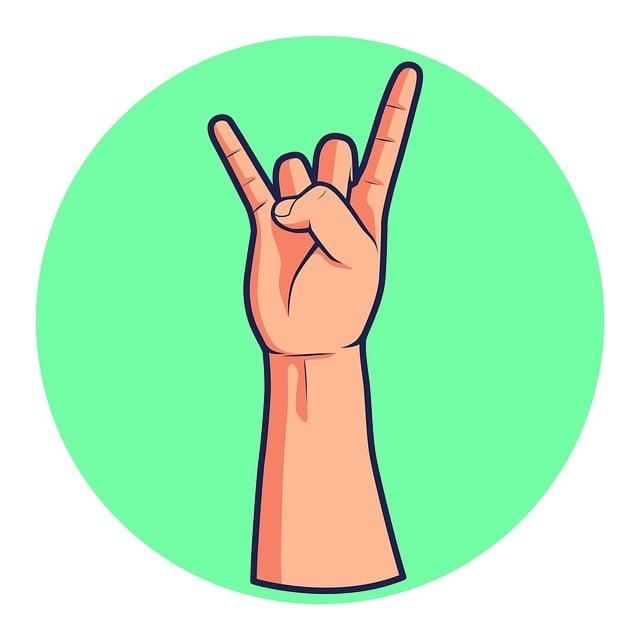Welcome, curious readers, to an intriguing exploration into the enigmatic world of finger guns—specifically, their elusive and somewhat controversial sexual connotations. In this thought-provoking article, we embark on a journey of discovery, diving deep into the nuances and hidden meanings behind this ubiquitous gesture. Delving beyond its playful exterior, we aim to shed light on the potentially intimate messages that finger guns can convey, unveiling insights that may surprise and captivate your inquisitive minds. So, prepare to unravel this captivating mystery as we unravel the tangled web of finger guns, deciphering their true significance in the realm of human interaction.
1. Understanding the Cultural Context of Finger Guns: Unveiling Sexual Connotations
When it comes to the usage of finger guns, it’s important to acknowledge the rich cultural context that surrounds this seemingly innocuous gesture. Often spotted in movies, cartoons, and daily interactions, finger guns have become a significant part of our non-verbal communication. But what lies beneath this playful gesture? Unveiling the deeper layers, we find that finger guns can bear sexual connotations, which can vary across different cultural settings.
The origins of finger guns can be traced back to the Wild West where they were commonly used as a symbolic gesture, representing the swift and decisive actions of cowboys. However, over time, this gesture has evolved and can now be associated with flirtation or innuendo in certain contexts. It’s important to note that these sexual connotations can greatly differ based on cultural norms and personal interpretations. In some cultures, finger guns may imply a playful and innocent form of flirting, while in others, they may be seen as provocative or even offensive.
- In certain Western cultures, finger guns can be used as a light-hearted way of expressing interest or attraction, often accompanying a flirtatious smile.
- On the other hand, some cultures may find the gesture disrespectful or inappropriate, seeing it as a suggestive or vulgar act.
- Moreover, the intent behind finger guns can also influence their interpretation, with the gesture being perceived differently in professional settings versus casual or intimate encounters.
Therefore, the cultural context and the specific situation in which finger guns are used play a crucial role in determining whether they carry sexual undertones or not. Being mindful of cultural nuances and individual sensitivities is essential to ensure effective communication and prevent misunderstandings that may arise from this seemingly harmless gesture.

2. Body Language and Nonverbal Communication: Decoding the Implications of Finger Guns
Understanding the subtle meanings:
When it comes to nonverbal communication, finger guns may seem like a harmless gesture, but they can convey a range of implications. While the literal interpretation may imply playfulness or joking, the true meaning behind finger guns lies in the context and the receiver’s interpretation. Let’s explore some potential implications associated with finger guns:
- Social connection: Finger guns can often be used as a friendly gesture to establish a bond or connection with someone. It may signify a shared understanding or inside joke.
- Power dynamics: In certain situations, finger guns can symbolize dominance or assertiveness. It can be seen as an attempt to exert control or influence over others.
- Relaxation and ease: Finger guns can be used to convey a laid-back attitude or a sense of comfort. It may suggest that the person is feeling at ease in the given environment.
Reading body language cues:
Decoding the implications of finger guns goes beyond the gesture itself. It is crucial to pay attention to accompanying body language cues to understand the intended message. Some factors to consider include:
- Facial expressions: The expression on the person’s face can indicate whether the finger guns are meant jokingly, sarcastically, or aggressively.
- Eye contact: Maintaining or avoiding eye contact while using finger guns can influence the overall interpretation. Direct eye contact might indicate confidence, while avoiding eye contact could suggest discomfort or insincerity.
- Gestures of others: Observing how other individuals respond to finger guns can provide insights into the intended meaning. Their body language and reactions can help gauge whether it is well-received or perceived negatively.

3. Misinterpretations and Boundaries: Navigating the Fine Line of Finger Guns’ Sexual Meaning
Understanding the various interpretations and boundaries surrounding the use of finger guns is crucial in avoiding miscommunication and potential discomfort. While finger guns have long been associated with playful gestures or mimicking firearms, it is important to acknowledge the growing perception of a sexual connotation attached to this hand gesture. Here are some key points to consider when navigating the fine line of finger guns’ sexual meaning:
- Intent matters: It is essential to distinguish between harmless fun and potentially offensive innuendos. The meaning conveyed by finger guns heavily relies on the context and the intention behind their usage. Be mindful of the environment, as different settings may have varying tolerances to the sexual undertones associated with the gesture.
- Consent and comfort: Respect for others’ boundaries is paramount when utilizing finger guns. Make sure that the recipient of the gesture is comfortable with the potential sexual undertones it may carry. When in doubt, it is always advisable to avoid using finger guns in scenarios where they might be misinterpreted or cause discomfort.
Misunderstandings can arise, particularly in diverse cultural settings, where the interpretation of finger guns may differ significantly. Recognizing and respecting these cultural variations is crucial to foster inclusive and respectful communication. Open dialogue and mutual understanding allow us to navigate the fine line between innocent gestures and those that may potentially offend or intrude upon personal boundaries.

4. The Impact of Consent: Recognizing the Importance of Clear Communication
In today’s society, the concept of consent has gained widespread recognition and significance. It plays a crucial role in various aspects of communication, relationships, and personal boundaries. By understanding and embracing the importance of clear communication, we can foster healthy connections and ensure mutual respect in all interactions.
Clear communication is at the heart of consent. It involves expressing one’s desires, limits, and boundaries openly and honestly, while also actively listening to others. When interacting with another person, it is essential to ask for and receive explicit consent before engaging in any activity that may affect them in any way. This can range from physical touch to sharing personal information or engaging in sexual intimacy. By obtaining clear and enthusiastic consent, we establish a solid foundation of trust, respect, and understanding.
Recognizing the significance of clear communication allows individuals to feel empowered to express their needs and desires without fear or judgment. It enables us to navigate conversations and relationships effectively, ensuring that all parties involved feel comfortable, heard, and valued. Moreover, embracing clear communication helps dismantle the harmful stereotypes and assumptions surrounding consent, fostering a culture of inclusivity and empowerment for all. So let us always remember that the impact of consent reaches far beyond explicit permission—it serves as a catalyst for maintaining healthy connections and promoting personal well-being.
5. Nurturing Healthy Communication: Alternatives to Finger Guns for Positive Interactions
In today’s multicultural and diverse society, it’s important to foster inclusive and positive communication habits. While gestures like finger guns may have been harmless in the past, it is always beneficial to explore alternative ways of engaging with others that promote understanding and respect. Let’s discover some creative and fun alternatives to finger guns that can enhance our interactions and create a more inclusive environment.
1. Hand on heart: Place your hand gently on your heart as a gesture of sincerity and empathy. This simple action can convey openness and compassion, encouraging a deeper connection with those around you.
2. Peace sign: Incorporate the iconic peace sign into your interactions to show solidarity and non-violence. This universally recognized symbol can help bridge gaps between cultures and promote harmony among diverse individuals.

6. Education and Awareness: Promoting Understanding and Respect in Sexual Connotations
Education and awareness play a crucial role in fostering understanding and respect when it comes to sexual connotations. By providing comprehensive and age-appropriate knowledge, we can empower individuals to navigate the complexities of their own sexuality and relationships. Here are some key points to consider:
- Comprehensive Sex Education: A well-rounded sex education curriculum goes beyond the basics of reproductive health. It encompasses topics such as consent, healthy relationships, gender identities, and sexual orientations. By equipping individuals with this knowledge, we can promote empathy, reduce stigma, and nurture a culture of respect.
- Challenging Stereotypes: It is essential to address and debunk harmful stereotypes surrounding sexual connotations. Encouraging open discussions about diverse sexual experiences and orientations can help dispel misconceptions and foster inclusivity. Teaching individuals to challenge societal norms and prejudices will contribute to a more accepting and understanding society.
- Media Literacy: Developing media literacy skills is vital in the digital age. By teaching individuals to critically analyze sexualized content in media, they can understand the impact it may have on their perceptions and attitudes. Empowering individuals to question prevailing narratives and seek diverse perspectives will lead to a more informed and respectful view of sexual connotations.
Overall, education and awareness initiatives focused on sexual connotations should aim to instill respect, understanding, and empathy. By providing comprehensive knowledge, challenging stereotypes, and promoting media literacy, we can create a society that embraces diversity and fosters healthy attitudes towards sexuality.

7. Encouraging Open Dialogue: Building Consent Culture and Challenging Misconceptions
Encouraging Open Dialogue: Building Consent Culture and Challenging Misconceptions
In order to build a consent culture and challenge misconceptions surrounding consent, it is essential to create an environment that promotes open dialogue. By encouraging open dialogue, we can foster a culture of respect, empathy, and understanding. Here are some ways to initiate and facilitate these conversations:
- Provide safe spaces: Create dedicated spaces where individuals feel comfortable talking about consent freely and openly. These spaces can be physical, such as classrooms or community centers, or virtual, such as online forums or social media groups.
- Normalize consent education: Integrate consent education into various aspects of everyday life, including schools, workplaces, and social events. By making consent education a normal part of our society, we can challenge misconceptions and empower individuals to engage in healthy discussions about boundaries and consent.
- Promote active listening: Encourage active listening in conversations about consent, where individuals genuinely hear and consider different perspectives. This helps create an environment where everyone feels valued and validated, making it easier to challenge misconceptions and expand our understanding of consent.
To further build a consent culture, it is crucial to address and challenge misconceptions surrounding consent. Here are some common misconceptions and ways to counter them:
- Consent is not just about sex: Educate people about the wide-ranging contexts in which consent applies, such as personal boundaries in everyday interactions, medical procedures, and even sharing personal information. This facilitates a more comprehensive understanding of consent and dispels the myth that it is limited to sexual encounters.
- Consent is not a one-time agreement: Clarify that consent is an ongoing process and can be revoked at any time. It is important to debunk the notion that once given, consent is everlasting. Encourage open conversations about renegotiating boundaries and communicating consent regularly, even within ongoing relationships.
- Consent is not implied: Challenge the belief that consent can be assumed or inferred. Stress the importance of obtaining explicit consent rather than relying on assumptions or body language. Open dialogue should promote the understanding that consent must be verbalized and actively given.
Frequently Asked Questions
Q: What does it mean when someone uses finger guns sexually?
A: The use of finger guns in a sexual context is often seen as a flirtatious gesture with underlying innuendo. It can suggest a person’s interest or attraction towards someone else.
Q: Is the meaning of finger guns always sexual?
A: No, finger guns can have various meanings depending on the context and the culture. While they are commonly associated with sexual connotations, in some scenarios, they may be used playfully or to express excitement or celebration.
Q: Are finger guns a widely recognized symbol for sexual intent?
A: Finger guns have gained some recognition as a symbol for sexual intent, particularly in certain social settings. However, it’s important to note that their interpretation can vary between individuals and cultures.
Q: How can finger guns be perceived differently by different people?
A: The perception of finger guns can vary based on several factors, including personal experiences, cultural backgrounds, and individual preferences. Some may find them amusing or harmless, while others might consider them inappropriate or offensive.
Q: Are finger guns exclusive to a particular gender or age group?
A: Finger gun gestures are not exclusive to any particular gender or age group. People of all genders and ages may use or interpret them in different ways, depending on the context and their own individual tendencies.
Q: Can finger guns be offensive or be considered harassment?
A: Yes, in certain situations, using finger guns in a sexual manner without consent can be deemed offensive, intrusive, or even harassment. It is essential to respect others’ boundaries and consent, as what may be playful for some could be unwanted or uncomfortable for others.
Q: Are there any cultural differences in the meaning of finger guns?
A: Yes, cultural differences do exist in the interpretation of finger guns. Some cultures may not associate them with any specific connotations, while others might perceive them differently based on their own cultural norms and values.
Q: How can one avoid misunderstandings when using finger guns?
A: To avoid misunderstandings, it’s crucial to be aware of the potential cultural, social, and personal implications of using finger guns. It’s always recommended to pay attention to the reactions and comfort level of those around you and refrain from using gestures that may be unwelcome or inappropriate.
Q: Are there any alternatives to using finger guns in a sexual manner?
A: Yes, there are several alternative ways to express attraction or interest without resorting to potentially offensive or suggestive gestures. Open and respectful communication, complimenting or engaging in non-verbal cues such as smiling or maintaining eye contact, can also convey an individual’s intentions without resorting to finger guns.
Q: How can one address the issue if they feel uncomfortable with someone using finger guns sexually?
A: If someone feels uncomfortable or offended by another person’s use of finger guns in a sexual context, it’s important to communicate their discomfort clearly and directly to the person involved. This can be done calmly and respectfully, expressing boundaries or concerns about the gesture and its impact. In conclusion, understanding the various meanings behind finger guns, including their potential sexual connotations, provides valuable insights into human communication and social dynamics. It is crucial to be aware of these subtle gestures and their implications to ensure effective and respectful communication.

